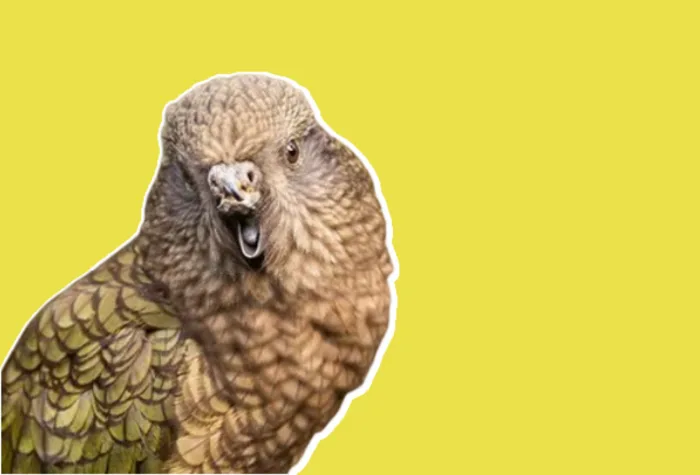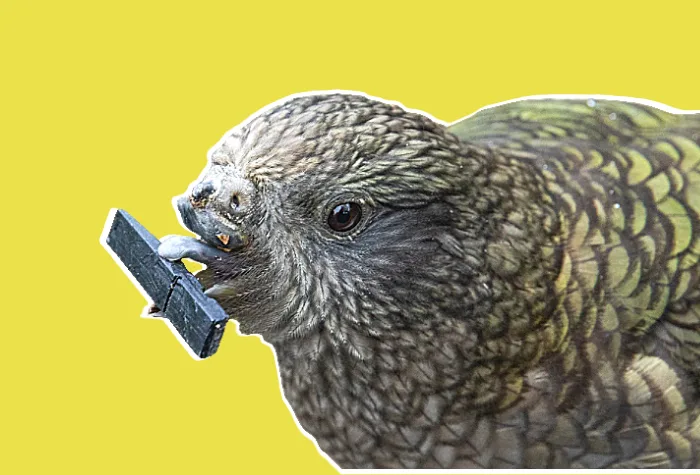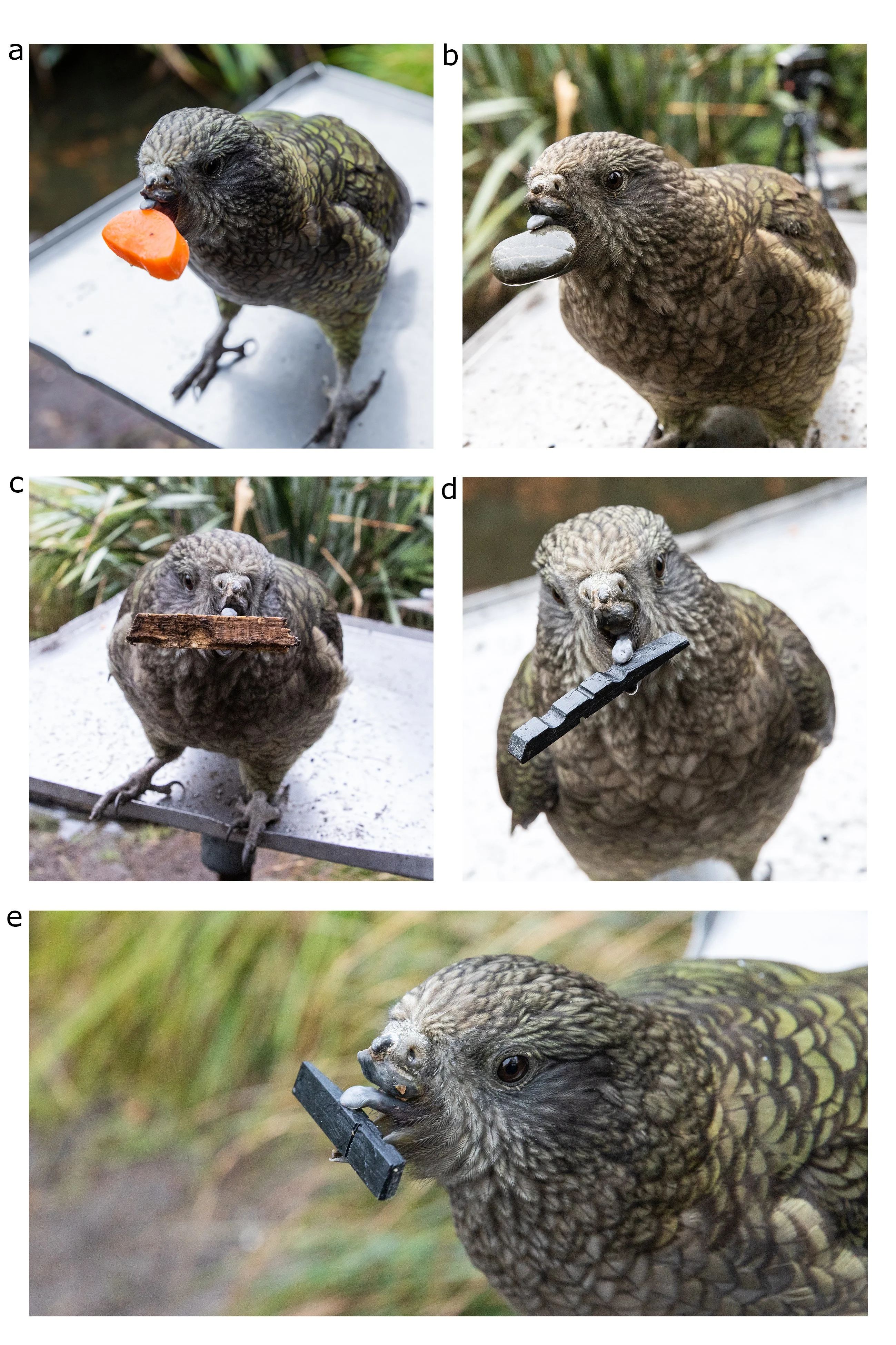
Disabled parrot learns to use tools for self-care
Bruce's behaviour has never been observed before in kea, scientists say.
Meet Bruce, a disabled kea with only half a beak:

Bastos et al./Scientific Reports
He lives at the Willowbank Wildlife Reserve in Christchurch, New Zealand, and he's learned to use tiny pebbles to preen himself. This is the first time biologists have observed a kea using tools for self-care and the first time a parrot has been seen using a pebble this way.
“Kea do not regularly display tool use in the wild, so to have an individual innovate tool use in response to his disability shows great flexibility in their intelligence," Amalia Basto, the lead author in the new paper about Bruce and an animal cognitive researcher said in a statement.
"They’re able to adapt and flexibly solve new problems as they emerge."

Bruce holding various objects. (Bastos et al./Scientific Reports)
Preening is important for several reasons. It removes dust and parasites from feathers, while aligning them to allow for better insulation, waterproofing, and aerodynamics.
It also makes birds look more attractive to potential mates.
Over a period of nine days, scientists observed Bruce's behaviour, recording him as he handled objects to determine if he was using the tools intentionally.
In 90 per cent of the instances where Bruce picked up a pebble, he used it to preen, the study's authors say. In 95 per cent of the instances where he dropped a pebble, he would pick it back up or find a new one before he continued to preen.
Another clue that the tool use is intentional is the size of the pebbles. Bruce was observed selecting stones of a certain size, rather than randomly picking up pieces from the ground.
Bruce was found in 2013 as an injured juvenile in the wild.
His caretakers aren't sure how he lost half his beak, but it may have been due to a pest trap.











